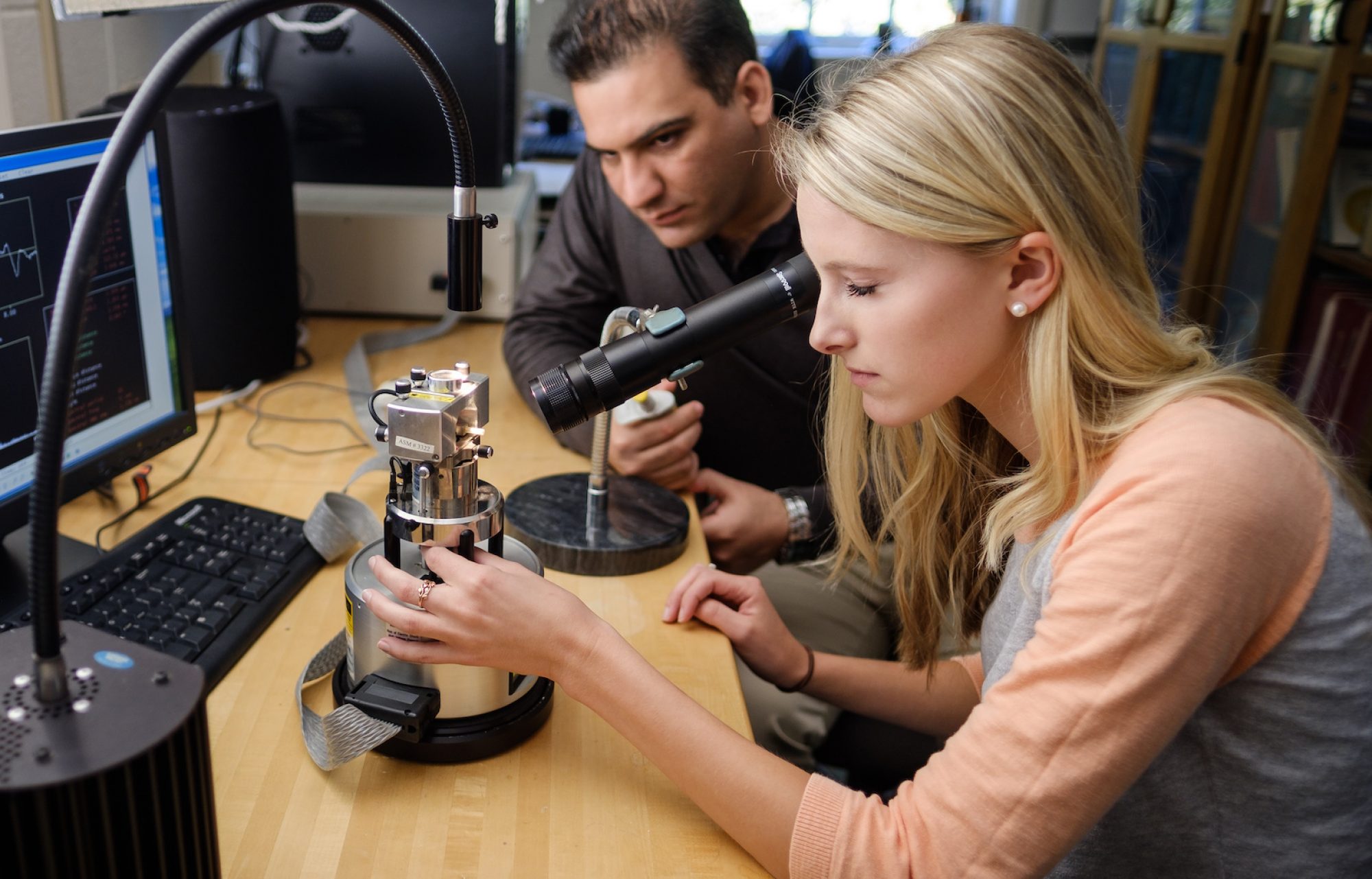Weronika Wolszczak, PhD
Technical University of Delft
Wake Forest University Postdoc 2019-2021
George P. Williams, Jr. Lecture Hall, (Olin 101)
Wednesday, Oct. 23, 2019, at 3:00 PM
There will be a reception in the Olin Lounge at approximately 4 PM following the colloquium. All interested persons are cordially invited to attend.
ABSTRACT
This talk will address two research topics which were bases of my Master and PhD theses.
The search for new physics at high energies was motivation for building the Large Hadron Collider (LHC), the world’s most powerful man-made particle accelerator. Five experiments have been constructed along the accelerator tunnel. The two largest ones, ATLAS (A Toroidal LHC Apparatus) and CMS (Compact Muon Solenoid), are multi-purpose detectors. The Nobel Prize in Physics 2013 was awarded jointly to François Englert and Peter W. Higgs “for the theoretical discovery of a mechanism that contributes to our understanding of the origin of mass of subatomic particles, and which recently was confirmed through the discovery of the predicted fundamental particle, by the ATLAS and CMS experiments at CERN’s Large Hadron Collider.”. Here I will present my contribution to the CMS experiment and research before the discovery of the Higgs boson.
Scintillators are important materials for ionizing radiation detection.
As determined by photon detection statistics, the ultimate energy resolution for γ‐photon detection can only be approached for materials that show a perfect proportional response with γ‐energy. A large amount of research has resulted in the discovery of highly proportional materials, such as LaBr3:Ce3+,Sr2+, SrI2:Eu2+ and CsBa2I5:Eu2+. However, the resolution is still far from the theoretical limit. In this part I will discuss my research on non-proportionality of scintillation response and new strategies to improve energy resolution.
